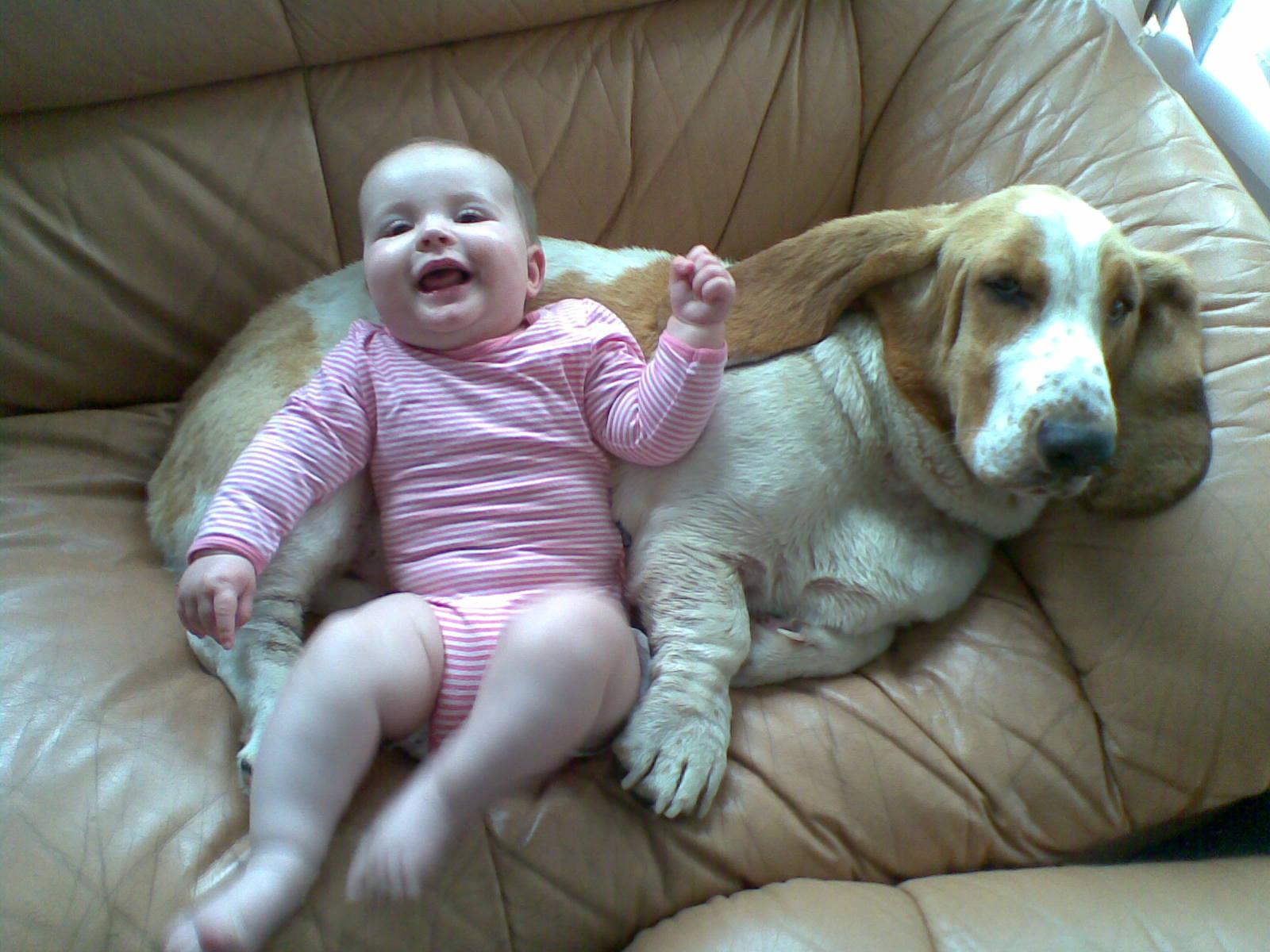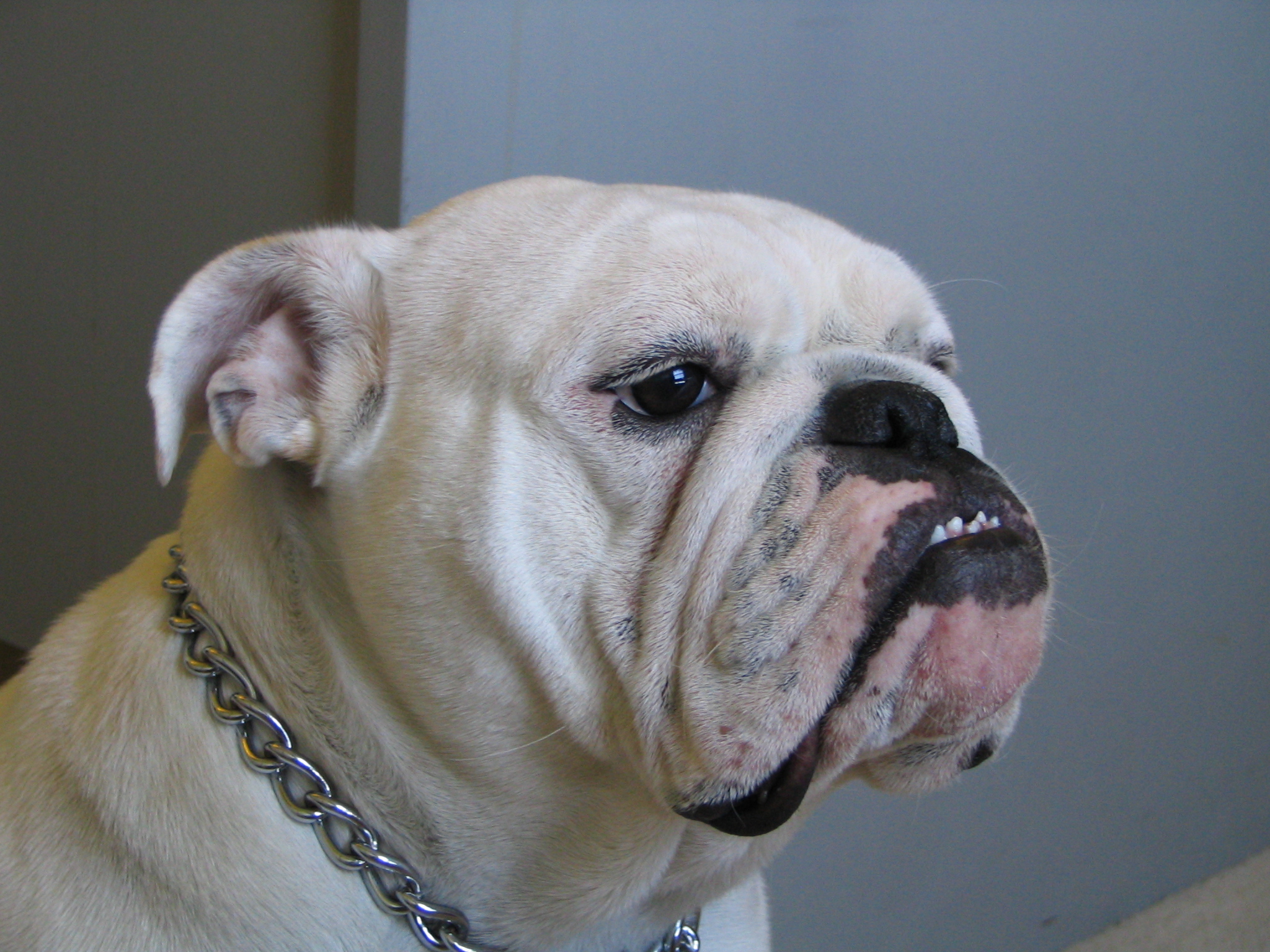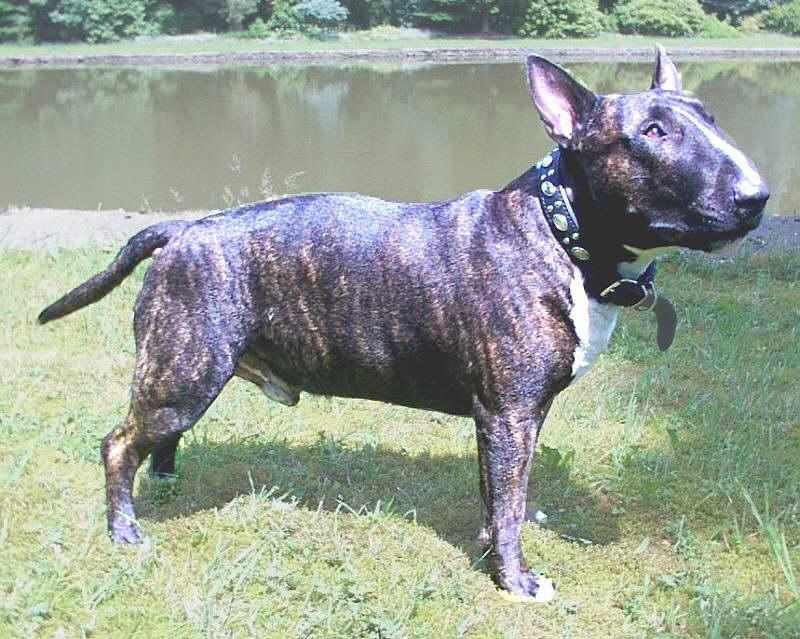|
Pedigree Dogs Exposed – Three Years On
''Pedigree Dogs Exposed: Three Years On'' is a 2012 follow-up to the 2008 BBC One documentary, ''Pedigree Dogs Exposed'' (''PDE''). While this second programme looks at the positive changes made since the original film, it focuses on investigating areas of continuing concern. The programme concluded that it was time to call a halt to suffering created by breeders. It states that as long as the Kennel Club (KC) tolerated human whim leading to dogs that cannot run, breathe, or see freely, dogs would continue to suffer, but featured that, in fact, the Kennel Club would continue in the vein, suggesting that the organisation has a conflict of interest in juggling its commitments to breeders and to dogs – when the interest of dogs does not match up with that of breeders, the dogs suffer. It also called on dog fanciers to stop being consumers of 'freak-show" appearance, the driving factor in developing dogs to physical extremes. KC refused to participate in the production. The prog ... [...More Info...] [...Related Items...] OR: [Wikipedia] [Google] [Baidu] |
BBC Four
BBC Four is a British free-to-air public broadcast television channel owned and operated by the BBC. It was launched on 2 March 2002"Culture, controversy and cutting edge documentary: BBC FOUR prepares to launch" BBC Press Office, 14 February 2002. Retrieved 2 April 2010. and shows a wide variety of programmes including arts, documentaries, music, international film and drama, and current affairs. It is required by its licence to air at least 100 hours of new arts and music programmes, 110 hours of new factual programmes, and to premiere twenty foreign films each year. [...More Info...] [...Related Items...] OR: [Wikipedia] [Google] [Baidu] |
Uric Acid
Uric acid is a heterocyclic compound of carbon, nitrogen, oxygen, and hydrogen with the formula C5H4N4O3. It forms ions and salts known as urates and acid urates, such as ammonium acid urate. Uric acid is a product of the metabolic breakdown of purine nucleotides, and it is a normal component of urine. High blood concentrations of uric acid can lead to gout and are associated with other medical conditions, including diabetes and the formation of ammonium acid urate kidney stones. Chemistry Uric acid was first isolated from kidney stones in 1776 by Swedish chemist Carl Wilhelm Scheele. In 1882, the Ukrainian chemist Ivan Horbaczewski first synthesized uric acid by melting urea with glycine. Uric acid displays lactam–lactim tautomerism (also often described as keto–enol tautomerism). Although the lactim form is expected to possess some degree of aromaticity, uric acid crystallizes in the lactam form, with computational chemistry also indicating that tautomer to be the most s ... [...More Info...] [...Related Items...] OR: [Wikipedia] [Google] [Baidu] |
Neapolitan Mastiff
The Neapolitan Mastiff or is an Italian breed of large dog of mastiff type. It descends from the traditional guard dogs of central Italy. It was recognised as a breed by the Ente Nazionale della Cinofilia Italiana in 1949, and accepted by the Fédération Cynologique Internationale in 1956. It is closely related to the Cane Corso. History The Neapolitan Mastiff derives from the traditional catch and guard dogs of central Italy. Selection of the breed was begun in 1947 by Piero Scanziani, who had seen one at an exhibition in Naples in 1946. He drew up the first standard, which in 1949 was officially recognised by the Ente Nazionale della Cinofilia Italiana. It received full acceptance from the Fédération Cynologique Internationale in 1956. Characteristics The Neapolitan Mastiff is large and powerful, with a weight in the range and a height at the withers of The length of the body is about 15% greater than the height. The skin is abundant and loose, particularly on ... [...More Info...] [...Related Items...] OR: [Wikipedia] [Google] [Baidu] |
Shar Pei
The Shar Pei (Cantonese: ''shā pèih'' or Mandarin: 沙皮 ''shā pí'') is a dog breed from southern China. Traditionally kept as a property guardian, the Shar Pei was driven to the brink of extinction in the 20th century. The breed is known in the West for its deep wrinkles, whilst a traditional less wrinkled form is maintained in Hong Kong. History There are no records indicating the origins of the Shar Pei, although it closely resembles effigies of an un-wrinkled type of guard dog kept in southern China during the Han dynasty; some believe the modern breed, along with the Chow Chow, descends from these dogs. The breed has been identified as a basal breed that predates the emergence of the modern breeds in the 19th century. The Shar Pei was once very popular, but war and political turmoil in China in the 20th century took its toll on the breed and by the 1970s it was close to extinction. In 1973 a Hong Kong businessman named Matgo Law appealed to the international commu ... [...More Info...] [...Related Items...] OR: [Wikipedia] [Google] [Baidu] |
Basset Hound
The Basset Hound is a short-legged breed of dog in the hound family. The Basset is a scent hound that was originally bred for the purpose of hunting hare. Their sense of smell and ability to ''ground-scent'' is second only to the Bloodhound.Hart, Ernest H. ''This Is the Basset Hound'', T.F.H. Books, 1974. Basset Hounds are one of six recognized " basset"-type breeds in France. The name ''Basset'' is derived from the French word ''bas'', meaning 'low', with the attenuating suffix ''-et''—together meaning 'rather low'. Basset Hounds are usually bicolours or tricolours of standard hound coloration. Description Appearance Bassets are large, short, solid and long, with curved sabre tails held high over their long backs. An adult dog weighs between . This breed, relative to its size, is heavier-boned than any other. This breed, like its ancestor the Bloodhound, has a hanging skin structure, which causes the face to tend to have a sad look; this, for many people, adds to the ... [...More Info...] [...Related Items...] OR: [Wikipedia] [Google] [Baidu] |
Leavitt Bulldog
The Olde English Bulldogge is an American dog breed, recognized by the United Kennel Club (UKC) in January 2014. The breed is listed in the UKC Guardian Dog Group. Five years prior to UKC recognition, the breed was registered by the former Canine Developmental, Health and Performance Registry (CDHPR), a privately held business located in Kalamazoo, Michigan. In the early 2000s, CDHPR had been working with the UKC under a unique agreement to develop breeding plans and strategies in an effort to produce improved breeds of dogs that would be accepted as purebred and, therefore, eligible for UKC registration. In the early 1970s, dog breeder David Leavitt of Coatesville, Pennsylvania, wanted to "recreate a with the looks, health and athleticism of the 18th which was originally created for the English sport of bull baiting between the years 1100 to 1835". Capitalization style of the quotation is preserved from the original. In an effort to rapidly achieve his goal for a purebred ... [...More Info...] [...Related Items...] OR: [Wikipedia] [Google] [Baidu] |
Morphology (biology)
Morphology is a branch of biology dealing with the study of the form and structure of organisms and their specific structural features. This includes aspects of the outward appearance (shape, structure, colour, pattern, size), i.e. external morphology (or eidonomy), as well as the form and structure of the internal parts like bones and organs, i.e. internal morphology (or anatomy). This is in contrast to physiology, which deals primarily with function. Morphology is a branch of life science dealing with the study of gross structure of an organism or taxon and its component parts. History The etymology of the word "morphology" is from the Ancient Greek (), meaning "form", and (), meaning "word, study, research". While the concept of form in biology, opposed to function, dates back to Aristotle (see Aristotle's biology), the field of morphology was developed by Johann Wolfgang von Goethe (1790) and independently by the German anatomist and physiologist Karl Friedrich Burdach ... [...More Info...] [...Related Items...] OR: [Wikipedia] [Google] [Baidu] |
Bulldog
The Bulldog is a British breed of dog of mastiff type. It may also be known as the English Bulldog or British Bulldog. It is of medium size, a muscular, hefty dog with a wrinkled face and a distinctive pushed-in nose."Get to Know the Bulldog" , 'The American Kennel Club'. Retrieved 29 May 2014 It is commonly kept as a ; in 2013 it was in twelfth place on a list of the breeds most frequently registered worldwide. The Bulldog has a longstanding association with ; the |
Bull Terrier
The Bull Terrier is a breed of dog in the terrier family. There is also a miniature version of this breed which is officially known as the Miniature Bull Terrier. Appearance The Bull Terrier's most recognizable feature is its head, described as 'egg-shaped head', when viewed from the front; the top of the skull is almost flat. The profile curves gently downwards from the top of the skull to the tip of the nose, which is black and bent downwards at the tip, with well-developed nostrils. The lower jaw is deep and strong. The unique triangular eyes are small, dark, and deep-set. Bull Terriers are the only dogs that have triangular eyes. The body is full and round, with strong, muscular shoulders. The tail is carried horizontally. They are either white, red, fawn, black, brindle, or a combination of these. Temperament Bull Terriers can be both independent and stubborn and for this reason are not considered suitable for an inexperienced dog owner. A Bull Terrier has an even temper ... [...More Info...] [...Related Items...] OR: [Wikipedia] [Google] [Baidu] |
Dachshund
The dachshund ( or ; German: "badger dog"), also known as the wiener dog, badger dog, and sausage dog, is a short-legged, long-bodied, hound-type dog breed. The dog may be smooth-haired, wire-haired, or long-haired, and comes in a variety of colors. The standard-sized dachshund was developed to scent, chase, and flush out badgers and other burrow-dwelling animals. The miniature dachshund was bred to hunt small animals such as rabbits. According to the American Kennel Club, the dachshund was ranked 12th in popularity among dog breeds in the United States in 2018. Etymology The name ''dachshund'' is of German origin and literally means "badger dog," from ("badger") and ("hound, dog"). The German word is pronounced . The pronunciation varies in English: variations of the first and second syllables include , and , , . It may be incorrectly pronounced as ''hound'' by some English speakers. Although is a German word, in modern German they are more commonly known by the sh ... [...More Info...] [...Related Items...] OR: [Wikipedia] [Google] [Baidu] |
Mutation
In biology, a mutation is an alteration in the nucleic acid sequence of the genome of an organism, virus, or extrachromosomal DNA. Viral genomes contain either DNA or RNA. Mutations result from errors during DNA or viral replication, mitosis, or meiosis or other types of damage to DNA (such as pyrimidine dimers caused by exposure to ultraviolet radiation), which then may undergo error-prone repair (especially microhomology-mediated end joining), cause an error during other forms of repair, or cause an error during replication (translesion synthesis). Mutations may also result from insertion or deletion of segments of DNA due to mobile genetic elements. Mutations may or may not produce detectable changes in the observable characteristics (phenotype) of an organism. Mutations play a part in both normal and abnormal biological processes including: evolution, cancer, and the development of the immune system, including junctional diversity. Mutation is the ultimate source o ... [...More Info...] [...Related Items...] OR: [Wikipedia] [Google] [Baidu] |
Popular Sire Effect
The popular sire effect (or popular stud/sire syndrome) occurs when an animal with desirable attributes is bred repeatedly. In dog breeding, a male dog that wins respected competitions becomes highly sought after, as breeders believe the sire possesses the genes necessary to produce champions. However, the popular sire effect is not just down to wanting to produce a champion. For example, in Staffordshire Bull Terriers there are several popular sires who are used by breeders to produce specific colours that are not favoured in the show ring. The popular sire is often bred extensively with many females. This can cause undetected, undesirable genetic traits in the stud to spread rapidly within the gene pool. It can also reduce genetic diversity by the exclusion of other males. While a popular stud can sire a large number of litters, the effect of a popular dam is more limited. The constraints of the female reproductive cycle requires dams to have several months in between each litter ... [...More Info...] [...Related Items...] OR: [Wikipedia] [Google] [Baidu] |









